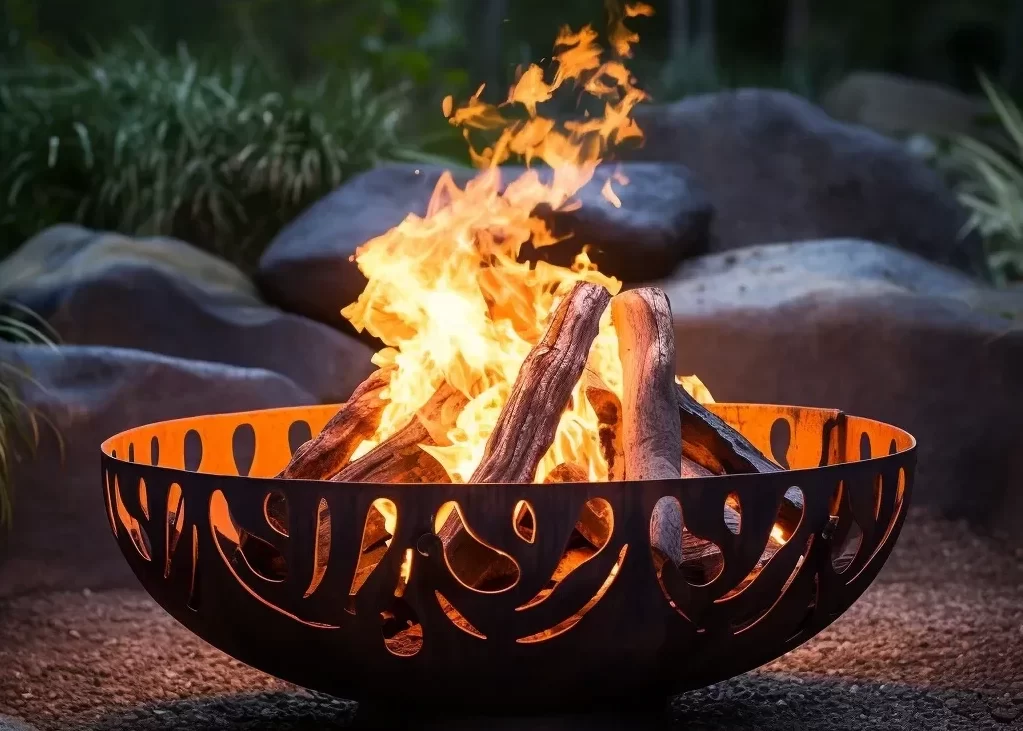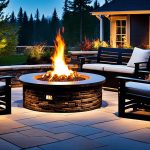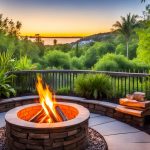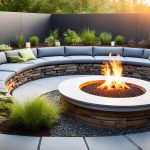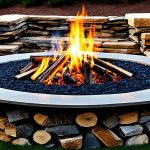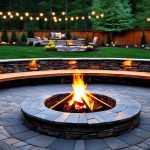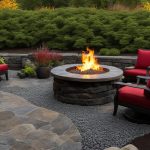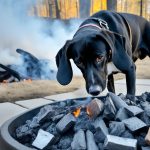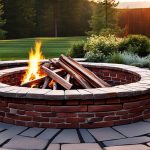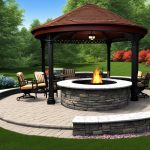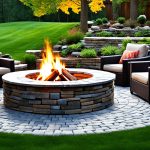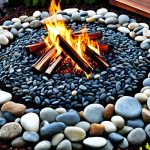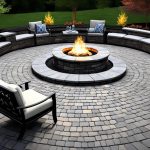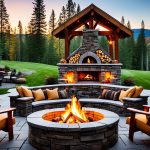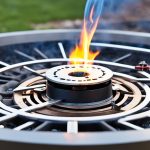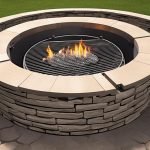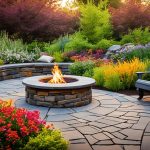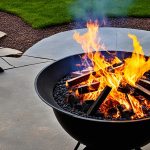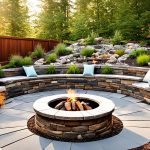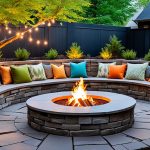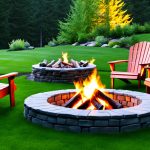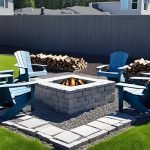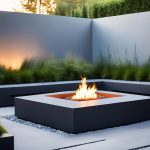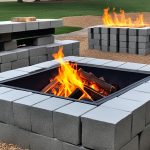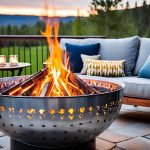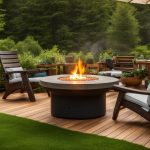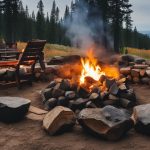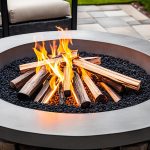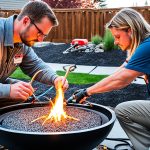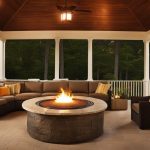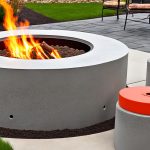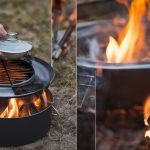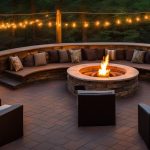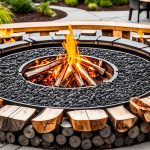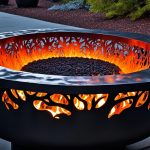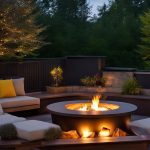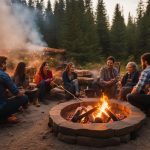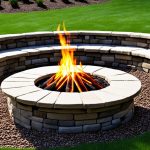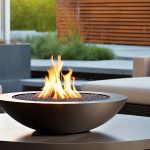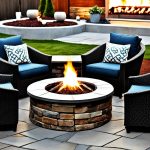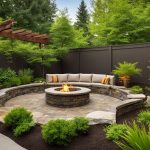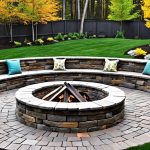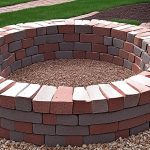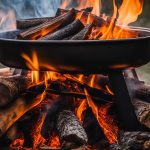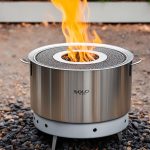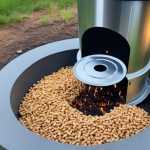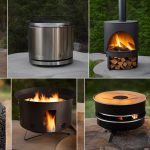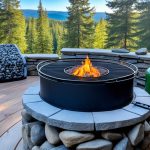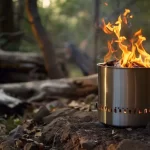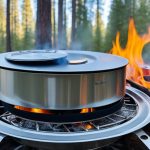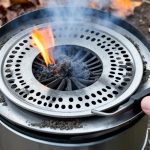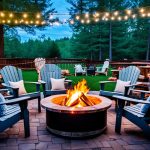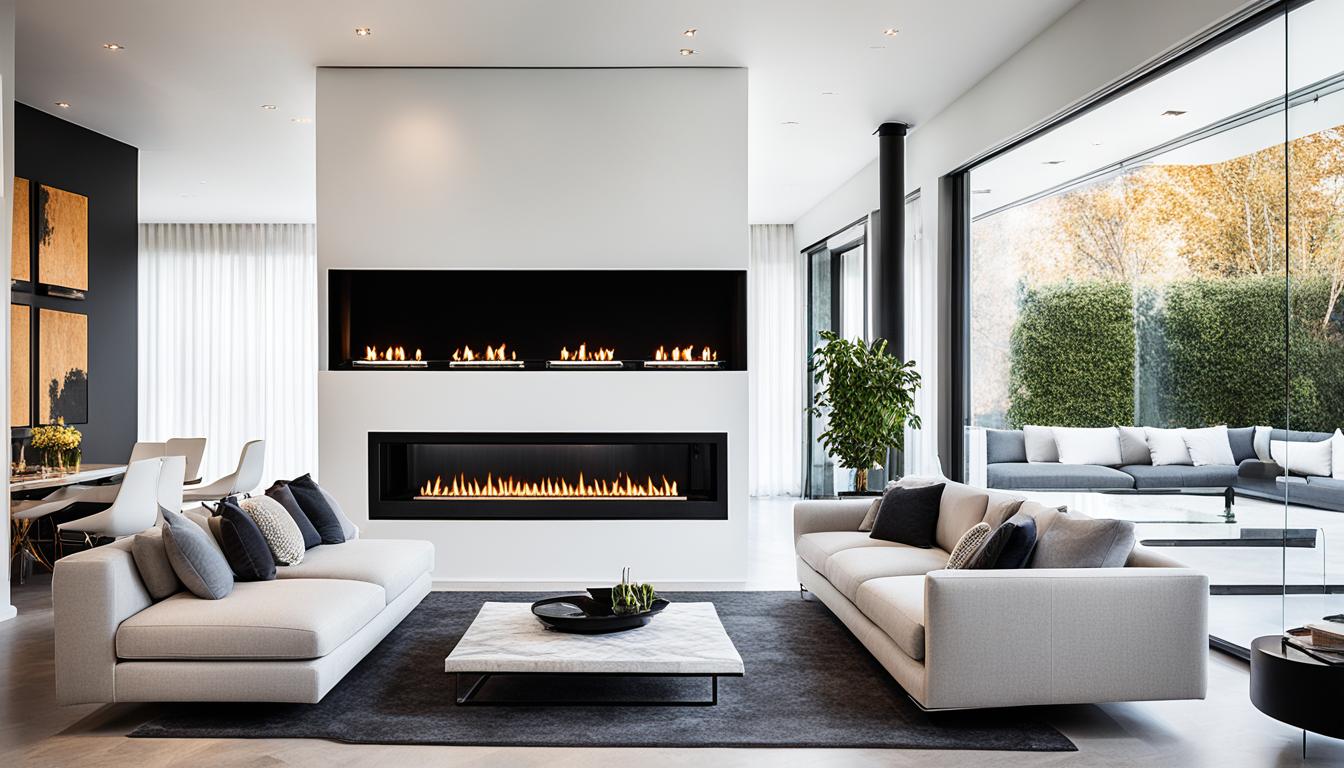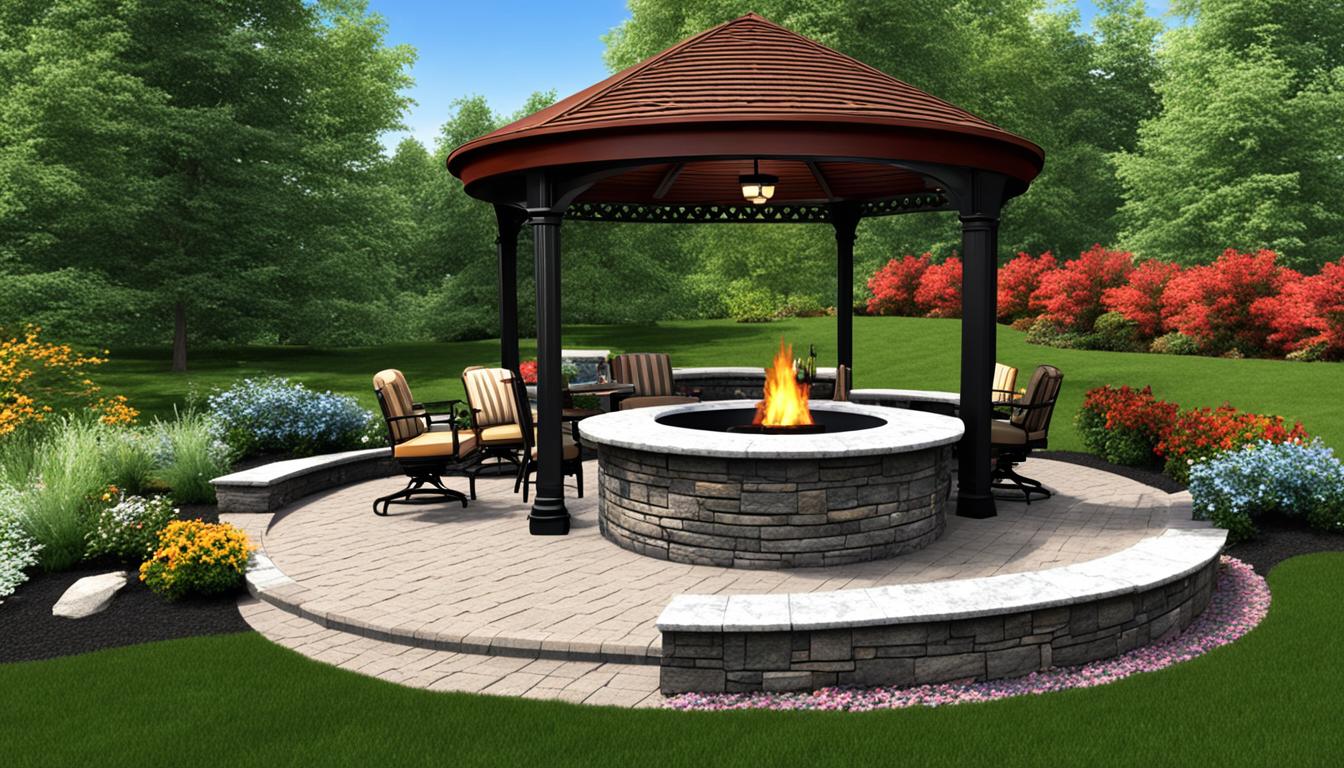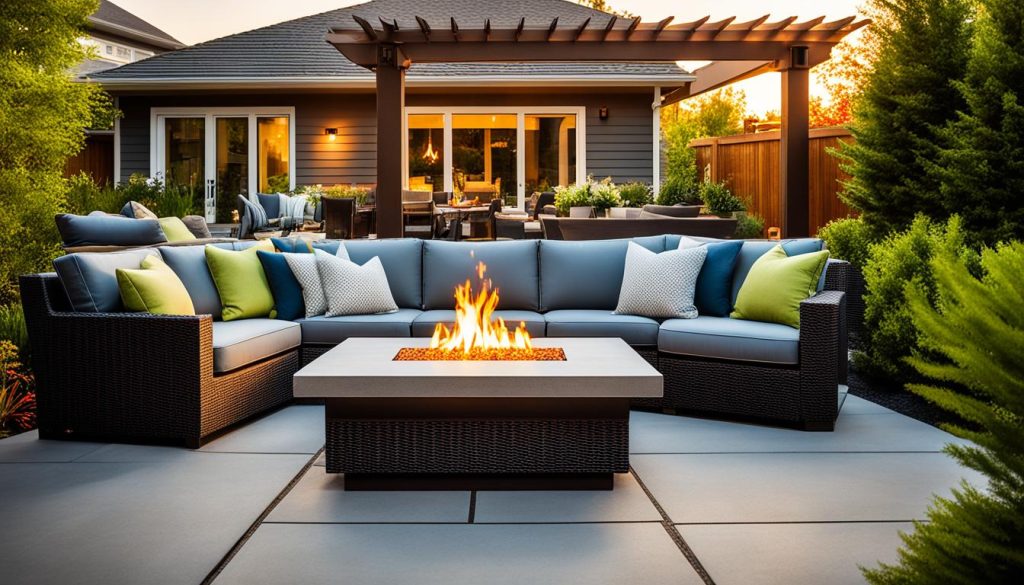
Are you looking to create a cozy and inviting ambiance in your outdoor space? A gas fire pit can be the perfect addition. But do you know the key steps and considerations for a safe and successful installation? In this quick guide, we’ll walk you through the process of installing a gas fire pit in your outdoor area, ensuring that you can enjoy warmth and relaxation with peace of mind.
Key Takeaways
- Hiring a licensed gas installer is recommended for proper gas connections and installation.
- Choose the right location for your gas fire pit, considering factors like surface type and proximity to combustible structures.
- Consider the fuel type and ventilation requirements for your fire pit, whether it’s natural gas or propane.
- Understand the enclosure construction and burner components, including the types of burners and connectors used.
- Follow safety guidelines and local building codes to ensure a safe and successful installation.
Location and Considerations for Gas Fire Pit Installation
When it comes to installing a gas fire pit in your outdoor area, choosing the right location is crucial for both safety and functionality. Here are some key considerations to keep in mind:
1. Surface:
The fire pit should be installed on a flat and level surface, such as a patio or deck. If you’re planning to install it on a deck, make sure that the fire pit is approved for use on combustible surfaces. Consider adding a non-combustible base beneath the fire pit to provide an extra layer of protection.
2. Proximity:
It is essential to maintain sufficient clearance on all sides and above the burner to comply with safety regulations. Local building codes may dictate specific requirements, but as a general rule, the fire pit should be placed at least 20-25 feet away from any combustible structure or overhanging trees.
3. Local Ordinances:
Before proceeding with the installation, be sure to check local ordinances and regulations related to gas fire pit installations. These regulations might include guidelines on proximity to structures, fire safety requirements, and permits.
Tip: Always consult with a licensed gas professional to ensure compliance with local codes and to handle the gas connections and installation process safely.
By following these considerations, you can create a safe and enjoyable outdoor space with a gas fire pit. Take the time to choose the right location and comply with local regulations for a worry-free and cozy experience.
Fuel Type and Ventilation Requirements
When it comes to installing a gas fire pit in your outdoor area, understanding the fuel options and ventilation requirements is essential for a safe and efficient setup. There are two common fuel types for gas fire pits: natural gas and propane.
Natural gas fire pits: Installing a natural gas fire pit requires the expertise of a licensed gas professional who will handle the installation of a natural gas line and connect it to the fire pit. This ensures that the gas connections are properly sealed and comply with safety regulations.
Propane fire pits: For propane fire pits, you have the option of connecting it to a large propane tank or a permanent gas line, depending on your preference and setup. It is important to follow the manufacturer’s instructions and consult with a professional to ensure proper connection and compliance with safety standards.
Regardless of the fuel type you choose, proper ventilation is crucial for the safe operation of your gas fire pit. Ventilation allows for the dissipation of gas and heat buildup, reducing the risk of potential explosions.
When installing the fire pit enclosure, consider the following ventilation requirements:
- For propane fire pits, ventilation openings should be placed at the bottom of the enclosure to allow any accumulated gas to easily disperse.
- For natural gas fire pits, ventilation openings should be placed at the top of the enclosure to allow for the release of any accumulated gas.
By carefully considering the ventilation requirements and following the proper installation guidelines for your fuel type, you can enjoy your gas fire pit while ensuring the safety of your outdoor space.
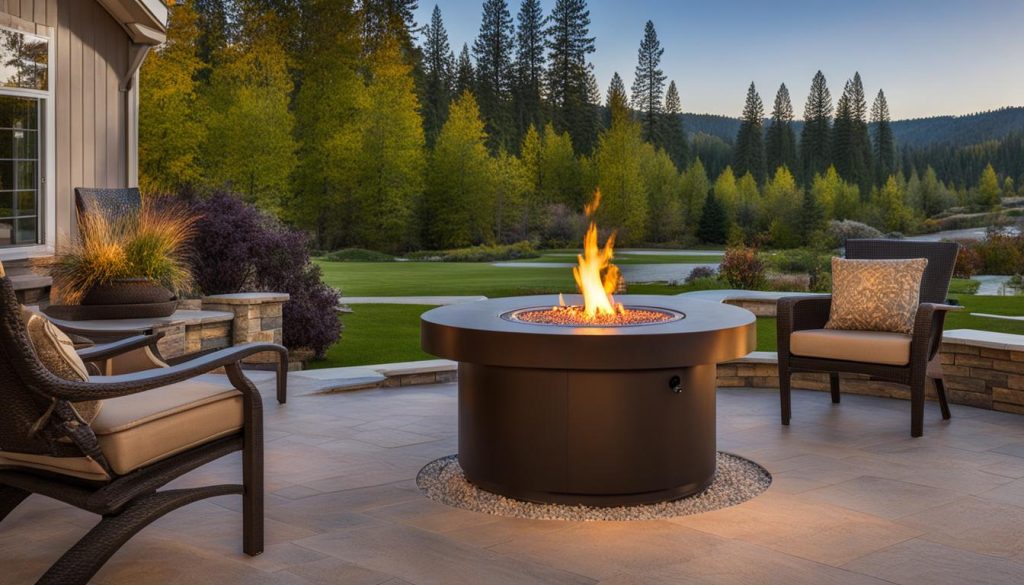
Enclosure Construction and Burner Components
When it comes to creating the perfect gas fire pit, the enclosure and burner components play a crucial role. Let’s explore the different options available for constructing the enclosure and the key components that make up the burner.
Enclosure Construction
One option for constructing the enclosure of your gas fire pit is using masonry bricks. These bricks can be stacked to create the desired shape and size, allowing you to customize your fire pit to fit your outdoor space perfectly. Another option is purchasing an unfinished enclosure or a DIY kit, which includes all the necessary components for assembly, making the process more convenient.
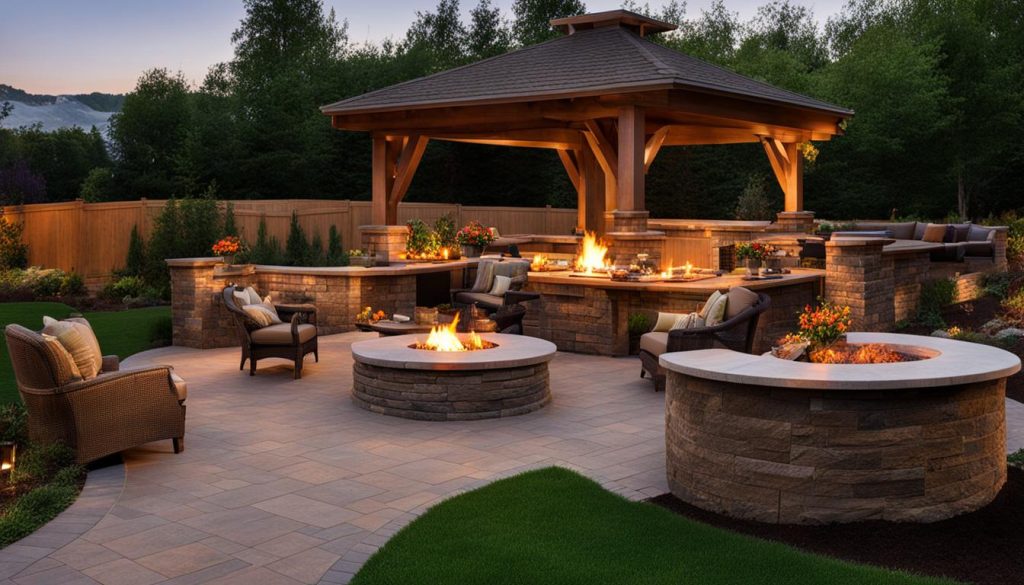
Burner Components
The burner is the heart of your gas fire pit, responsible for burning the gas and creating the mesmerizing flame. Burners come in various shapes, sizes, and materials, allowing you to choose the one that best suits your aesthetic preferences and the size of your fire pit. They can be standalone burners or part of a drop-in style burner bowl or trough, providing flexibility in design.
The burner is supported by a pan, which holds the media such as lava rock, fire glass, or gas logs. This pan not only enhances the visual appeal of your fire pit but also helps distribute the heat evenly.
Connectors and fittings are essential components for routing the gas from the supply line to the burner. It is crucial to use the appropriate size and fittings for optimal gas flow. A flexible gas line is recommended to ensure easy installation and maintenance.
For propane fire pits, an air mixer is necessary to ensure proper combustion. This component helps regulate the air and gas mixture, promoting efficient and safe burning.
Creating a beautiful and functional gas fire pit involves careful consideration of the enclosure construction and the burner components. Whether you choose to build the enclosure with masonry bricks or opt for a DIY kit, the key is to ensure structural integrity and durability. Likewise, selecting the right burner and accompanying components is crucial for a stunning flame and safe operation.
Now that we have covered the enclosure construction and burner components, let’s move on to the next section, where we will explore the location and considerations for gas fire pit installation.
Conclusion
Installing a gas fire pit in your outdoor area can transform it into a warm and inviting space for gatherings and relaxation. However, it is crucial to prioritize safety and adhere to local building codes throughout the installation process. To ensure a successful installation, it is highly recommended to hire a licensed gas professional who can expertly handle the gas connections and ensure compliance with safety regulations.
When installing a gas fire pit, several factors need to be considered to create a safe and enjoyable experience. The location of the fire pit should be carefully selected, taking into account clearances and proximity to combustible structures. Ventilation is crucial to prevent gas buildup, and the appropriate type of fuel, whether natural gas or propane, should be chosen based on your preferences and availability.
Additionally, the quality and construction of the enclosure and the selection of burner components play a significant role in the functionality and aesthetic of your gas fire pit. Whether you opt for a DIY enclosure using masonry bricks or a pre-made enclosure kit, ensure proper sealing and ventilation. Selecting the right burner and accompanying pan, along with the suitable gas connectors and fittings, will enhance the efficiency and visual appeal of your fire pit.
By following these guidelines and considering all aspects of gas fire pit installation, you can enjoy the cozy warmth and ambiance it brings to your outdoor space while ensuring the utmost safety for you and your loved ones.
Source Links
- https://www.firepit.co.uk/a/blog/how-to-install-a-natural-gas-fire-pit-or-propane-fire-pit
- https://www.woodlanddirect.com/how-to-build-a-gas-fire-pit.html
- https://support.celestialfireglass.com/how-to-guides/quick-tips-for-installing-a-diy-natural-gas-fire-pit/
Recommended
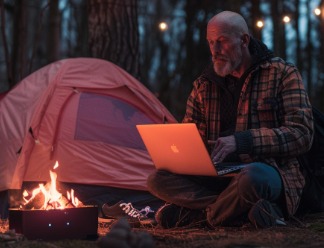
Otis, 52, embodies a lifetime of adventure, from the rugged hills of the USA to serene camping spots worldwide. His passion for the outdoors isn’t just a hobby; it’s a way of life that includes hiking, camping, and exploring the unknown. With decades of experiences under his belt, Otis shares his adventures and lessons learned through Natural Fire Pit. Beyond fire pits, his expertise in outdoor living, from setting up the perfect tent to finding off-the-beaten-path travel destinations, guides fellow enthusiasts. Follow Otis’s journey for a deeper connection with nature.
